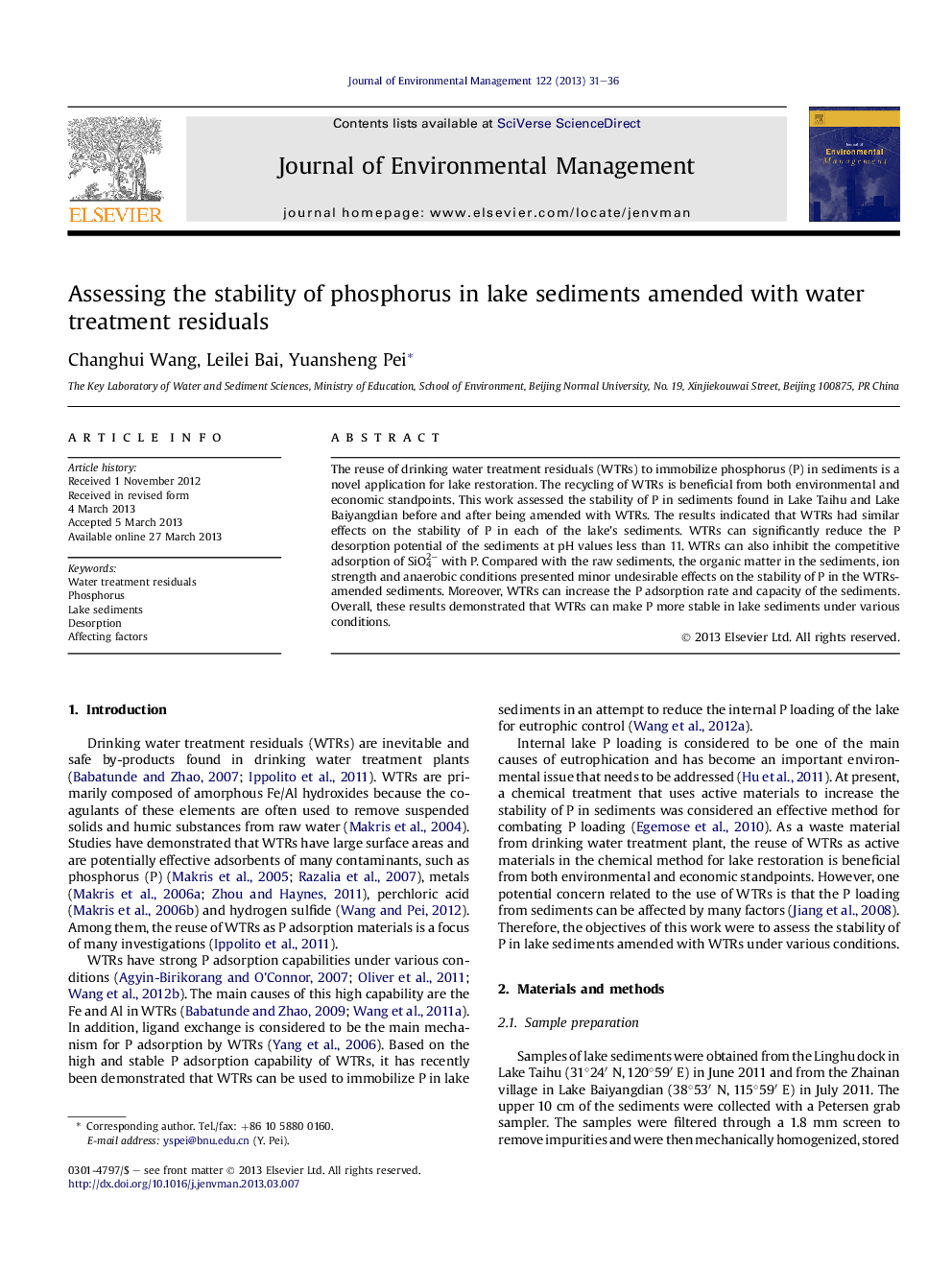| Article ID | Journal | Published Year | Pages | File Type |
|---|---|---|---|---|
| 1056333 | Journal of Environmental Management | 2013 | 6 Pages |
•Water treatment residuals (WTRs) can keep P stable in lake sediments.•WTRs can increase the P adsorption rate and capacity of the sediments.•Reuse of WTRs to immobilize P in the sediments will lead to a win–win technique.
The reuse of drinking water treatment residuals (WTRs) to immobilize phosphorus (P) in sediments is a novel application for lake restoration. The recycling of WTRs is beneficial from both environmental and economic standpoints. This work assessed the stability of P in sediments found in Lake Taihu and Lake Baiyangdian before and after being amended with WTRs. The results indicated that WTRs had similar effects on the stability of P in each of the lake's sediments. WTRs can significantly reduce the P desorption potential of the sediments at pH values less than 11. WTRs can also inhibit the competitive adsorption of SiO42− with P. Compared with the raw sediments, the organic matter in the sediments, ion strength and anaerobic conditions presented minor undesirable effects on the stability of P in the WTRs-amended sediments. Moreover, WTRs can increase the P adsorption rate and capacity of the sediments. Overall, these results demonstrated that WTRs can make P more stable in lake sediments under various conditions.
